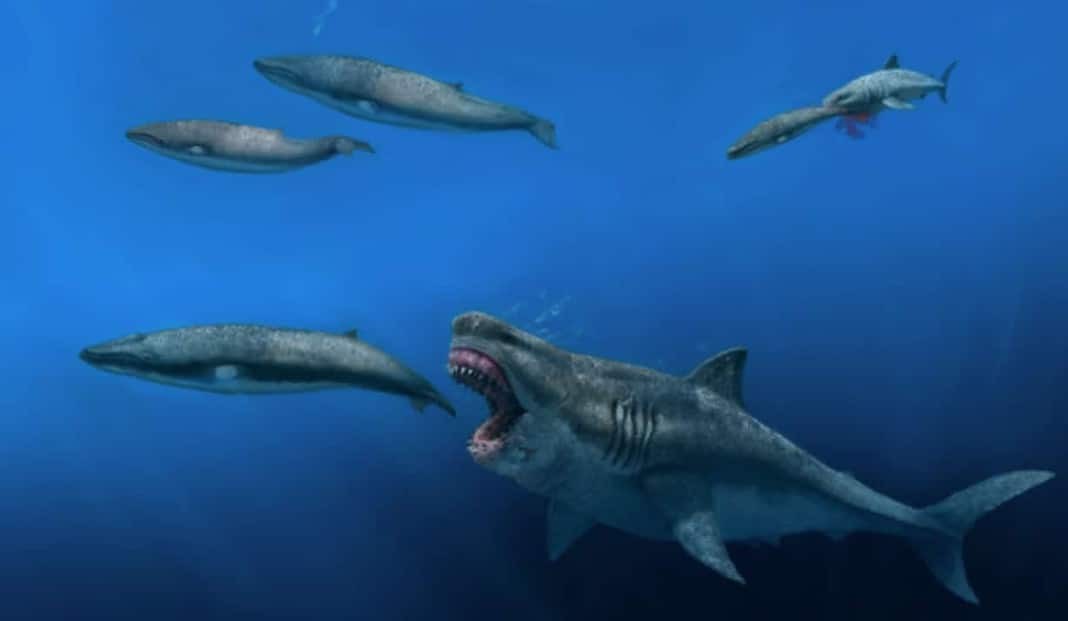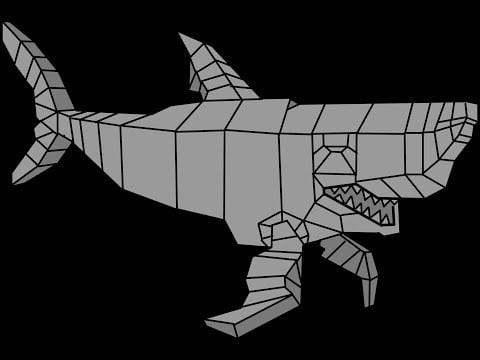Scientists have made a three-dimensional model of how big the extinct Megalodon shark was — big enough for it to eat prey the size of modern killer whales.
Researchers made a 3D model of one individual megalodon which was discovered in the 1860s. Against all odds, a sizeable portion of its vertebral column was left behind in the fossil record after the creature died in the Miocene oceans of Belgium at the age of 46 about 18 million years ago.
According to first author Jack Cooper, a PhD student at Swansea University:
“Shark teeth are common fossils because of their hard composition which allows them to remain well preserved. However, their skeletons are made of cartilage, so they rarely fossilize. The megalodon vertebral column from the Royal Belgian Institute of Natural Sciences is therefore a one-of-a-kind fossil.”
The research team, which includes researchers from Switzerland, UK, USA, Australia and South Africa, first measured and scanned every single vertebra, before reconstructing the entire column. They then attached the column to a 3D scan of a megalodon’s teeth from the United States. They completed the model by adding “flesh” around the skeleton using a 3D-scan of the body of a great white shark from South Africa.
Co-author John Hutchinson, professor at the Royal Veterinary College in the UK, said:
“Weight is one of the most important traits of any animal. For extinct animals we can estimate the body mass with modern 3D digital modelling methods and then establish the relationship between mass and other biological properties such as speed and energy usage.”
Megalodon bite marks had been previously found in prehistoric whale fossils, and a foraging model made by the scientists found that eating a single 8-meter-long (26-foot-long) whale may have allowed the shark to swim thousands of miles across oceans without eating again for two months.
Catalina Pimiento, a professor at the University of Zurich and senior author of the study, said:
“These results suggest that this giant shark was a trans-oceanic super-apex predator. The extinction of this iconic giant shark likely impacted global nutrient transport and released large cetaceans from a strong predatory pressure.”
Check out a video explaining the researchers’ work below.
(Featured image credit: J.J. Giraldo)


